Faculty Directory
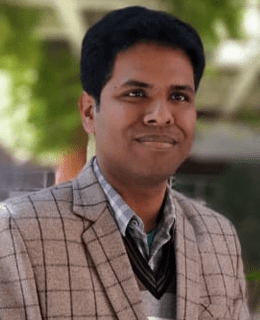
Dr. Ramendra Sundar Dey
Scientist-D
Dey's laboratory for Electrochemistry of NanoMaterials (DENanoMat) group research interest is focused on nanocarbon-based hybrid materials for state-of-the-art energy storage and conversion system for renewable energy generation. We are in progress in developing a hybrid supercapacitor with battery or biofuel cells for clean and self-sustainable energy storage devices, paper-based biofuel cell and electrochemical study of nanoporous materials. Electrochemical fixation of CO2 and N2, and metal-air battery is our major research interest. We are also interested in developing low-cost biosensing devices.
Contact Information :
-
Email:
rsdey@inst.ac.in -
Personal Webpage:
Personal Webpage -
Google Link:
Google Link
-
Ph.D. positions are available in my group for students with CSIR-NET-JRF, UGC-NET-JRF or any other national fellowship.
Contact the PI at rsdey@inst.ac.in for more details.
-
Electrochemistry of nanomaterials
Inorganic and materials chemistry
Electrochemical N2 fixation to ammonia and urea
Electrochemical CO2 reduction
Electrocatalysis: water splitting and oxygen reduction reactions
Energy conversion and storage
Supercapacitor, on-chip microcapacitor, Li-ion battery, integrated self-powered storage device
Electrochemistry of 2D nanomaterials such as graphene and Mxene
Hybrid energy technology: solar-powered H2 production
-
Ultralong cycle life and outstanding capacitive performance of 10.8 V metal-free micro-supercapacitor with highly conducting and robust laser-irradiated graphene for integrated storage device (Energy Environ. Sci., 2019, 12, 2507-2517)
Dr. Ramendra S. Dey and his research team have recently shown that interconnected porous graphene plays a crucial role as supercapacitive material as well as a current collector in developing metal free microsupercapacitor (MSC) because of its unique structure and superior conductivity. Electrochemical reduction followed by use of a laser irradiation method shows advances for the fabrication of the conductive graphene-based robust device. The laser irradiation method is capable of healing the defects with fused interconnected sheets, as a result, high conductivity and improved crystallinity of the laser irradiated graphene (LIG) sample is achieved. The LIG film on a flexible substrate was patterned with the aim to develop an on-chip flexible MSC, which offers a large cell voltage of 10.8 V and 100% retention of the initial capacitance after 100 000 continuous cycles. The array of LIG-MSC was integrated with a commercial solar cell module for hybrid energy harvesting and as a storage device. This study provides an effective strategy to build a metal-free supercapacitor with exceptional cycle life and facilitates progress towards self-sustainable energy in the future.
-
Lewis acid-dominated aqueous electrolyte acting as co-catalyst and overcoming N2 activation issues on catalyst surface (Proceedings of the National Academy of Sciences (PNAS), 2022, 119 (33) e2204638119)
The electrochemical ammonia synthesis is majorly limited by the poor solubility of N2 in the aqueous electrolyte environment, besides the competitive hydrogen evolution reaction. In an attempt to solve these issues, the “ambient” conditions are mostly overlooked. This work is an approach to examine the long-standing issues about the solubility of N2 in aqueous medium and achievement of industrial-scale production rate of ammonia by nitrogen reduction reaction (NRR) at ambient condition. Mechanistic investigation shows that Lewis acid (BF3) has the capability to hold N2 by forming a Lewis acid-base adduct, which further adsorbs on catalyst surface by a push-pull electronic effect. Therefore, this report may open new vistas to studying and understanding the role of the NRR in aqueous medium.
-
Engineering hydrophobic-aerophilic interface to boost N2 diffusion and reduction through functionalization of fluorine in second coordination sphere. (Chemical Science, 2023, 14, 8936 - 8945)
Ammonia is a crucial biochemical raw material for nitrogen containing fertilizers and a hydrogen energy carrier obtained from renewable energy sources. Electrocatalytic ammonia synthesis is a renewable and less-energy intensive way as compared to the conventional Haber–Bosch process. The electrochemical nitrogen reduction reaction (eNRR) is sluggish, primarily due to the deceleration by slow N2 diffusion, giving rise to competitive hydrogen evolution reaction (HER). Herein, we have engineered a catalyst to have hydrophobic and aerophilic nature via fluorinated copper phthalocyanine (F-CuPc) grafted with graphene to form a hybrid electrocatalyst, F-CuPc-G. The chemically functionalized fluorine moieties are present in the second coordination sphere, where it forms a three-phase interface. The hydrophobic layer of the catalyst fosters the diffusion of N2 molecules and the aerophilic characteristic helps N2 adsorption, which can effectively suppress the HER. The active metal center is present in the primary sphere available for the NRR with a viable amount of H+ to achieve a substantially high faradaic efficiency (FE) of 49.3% at −0.3 V vs. RHE. DFT calculations were performed to find out the rate determining step and to explore the full energy pathway. A DFT study indicates that the NRR process follows an alternating pathway, which was further supported by an in situ FTIR study by isolating the intermediates. This work provides insights into designing a catalyst with hydrophobic moieties in the second coordination sphere together with the aerophilic nature of the catalyst that helps to improve the overall FE of the NRR by eliminating the HER.
-
Ultrafine mix-phase SnO-SnO2 nanoparticles anchored on reduced graphene oxide boost reversible Li-ion storage capacity beyond theoretical limit. (ACS Nano, 2022, 16, 15358–15368)
Tin-based materials with high specific capacity have been studied as high-performance anodes for Li-ion storage devices. Herein, a mix-phase structure of SnO-SnO2@rGO (rGO = reduced graphene oxide) was designed and prepared via a simple chemical method, which leads to the growth of tiny nanoparticles of a mixture of two different tin oxide phases on the crumbled graphene nanosheets. The three-dimensional structure of graphene forms the conductive framework. The as-prepared mix phase SnO-SnO2@rGO exhibits a large Brunauer-Emmett-Teller surface area of 255 m2 g–1 and an excellent ionic diffusion rate. When the resulting mix-phase material was examined for Li-ion battery anode application, the SnO-SnO2@rGO was noted to deliver an ultrahigh reversible capacity of 2604 mA h g–1 at a current density of 0.1 A g–1. It also exhibited superior rate capabilities and more than 82% retention of capacity after 150 charge–discharge cycles at 0.1 A g–1, lasting until 500 cycles at 1 A g–1 with very good retention of the initial capacity. Owing to the uniform defects on the rGO matrix, the formation of LiOH upon lithiation has been suggested to be the primary cause of this very high reversible capacity, which is beyond the theoretical limit. A Li-ion full cell was assembled using LiNi0.5Mn0.3Co0.2O2 (NMC-532) as a high-capacity cathodic counterpart, which showed a very high reversible capacity of 570 mA h g–1 (based on the anode weight) at an applied current density of 0.1 A g–1 with more than 50% retention of capacity after 100 cycles. This work offers a favorable design of electrode material, namely, mix-phase tin oxide-nanocarbon matrix, exhibiting adequate electrochemical performance for Li storage applications.
Current Group Members
-

NESHU
Email: neshu.ph24228@inst.ac.in
Reg. No.: PH24228
-

ROBIN SINGH
Email: robin.ph23220@inst.ac.in
Reg. No.: PH23220
-

MR. SURAJIT SAMUI
Email: surajit.ph22211@inst.ac.in
Reg. No.: PH22211
-
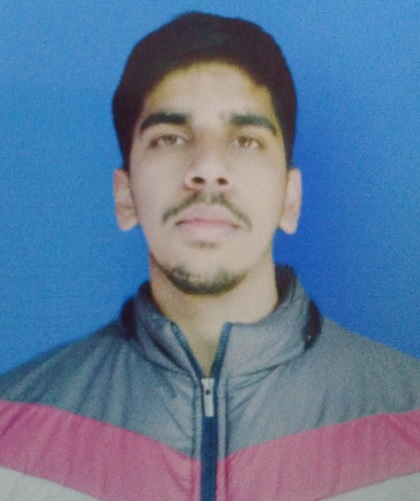
MR. BHARAT BHUSHAN UPRETI
Email: bharat.ph21235@inst.ac.in
Reg. No.: PH21235
-
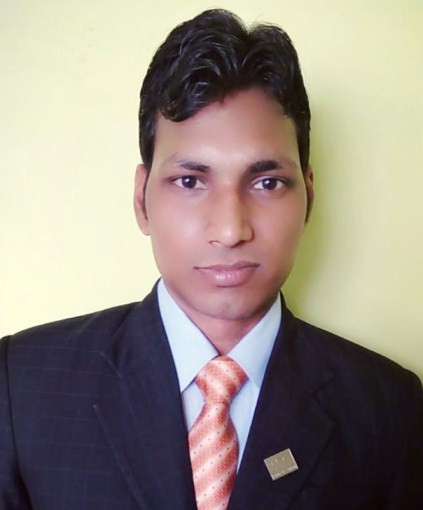
MR. GREESH KUMAR
Email: greesh.ph21204@inst.ac.in
Reg. No.: PH21204
Alumni
-

MURUGANANTHAM
Reg. No.: IN-2024/15
Designation: Intern Student
May 2024 - Jul 2024
-

SUMON SANTRA
Reg. No.: IN-2024/11
Designation: Intern Student
Jan 2024 - May 2024
-

TANIYA GUPTA
Reg. No.: PH23230
Designation: PhD Scholar
Jan 2024 - Oct 2024
-

MS. ARSHDEEP KAUR
Reg. No.: PH18206
Designation: PhD Scholar
Aug 2018 - Feb 2024
-
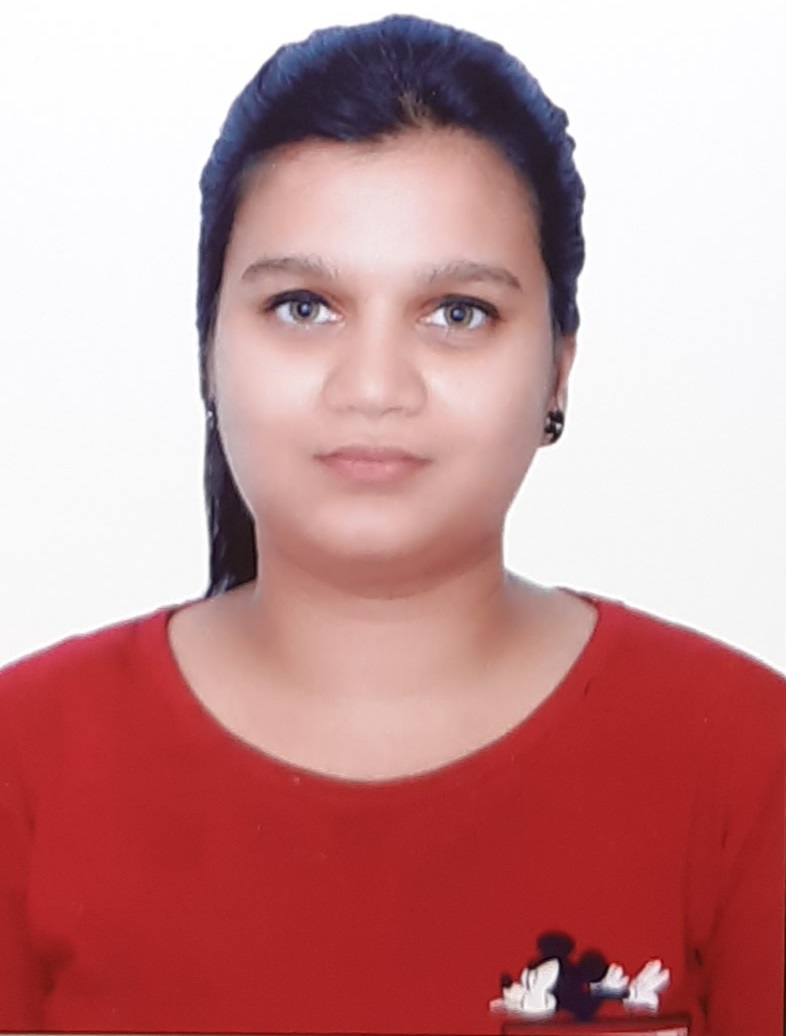
MS. AYUSHI SHUKLA
Reg. No.: PH18205
Designation: PhD Scholar
Aug 2018 - Feb 2024
-

SOUMYADIP SHARANGI
Reg. No.: PJRF
Designation: Project JRF/SRF
Mar 2023 - Dec 2023
-

MR. SAAD MEHMOOD
Reg. No.: PH22228
Designation: PhD Scholar
Jan 2023 - Jul 2023
-

MS. TRIBANI BORUAH
Reg. No.: PH21224
Designation: Project JRF/SRF
Aug 2021 - Dec 2022
-

MS.NAVPREET
Reg. No.: PH17220
Designation: PhD Scholar
Jan 2018 - Jun 2022
-

MS. SAKSHI
Reg. No.: PH19231
Designation: PhD Scholar
Jan 2020 - Feb 2025
-
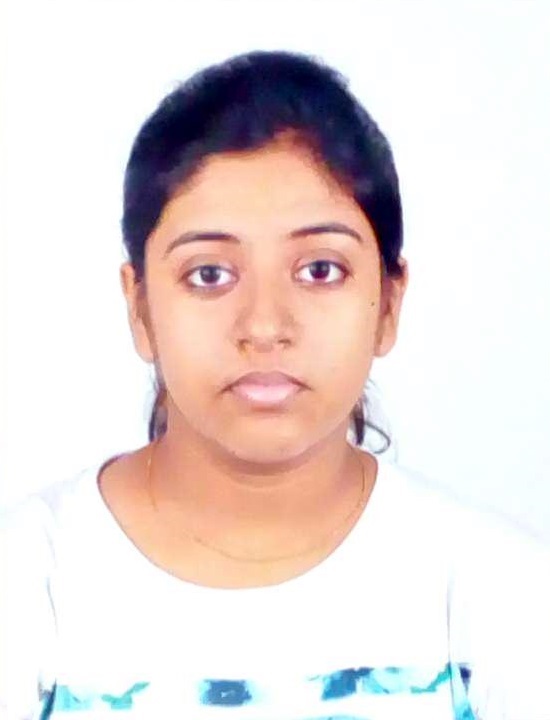
MS. ASHMITA BISWAS
Reg. No.: PH19211
Designation: PhD Scholar
Aug 2019 - May 2024
-
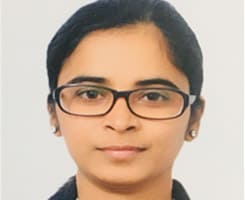
MS. MANISHA
Reg. No.: PH18204
Designation: PhD Scholar
Aug 2018 - Apr 2022
-

DR. SABUJ KANTI DAS
Reg. No.: RA-01-202103
Designation: Post Docs/RA
Jan 2021 - Apr 2023
-
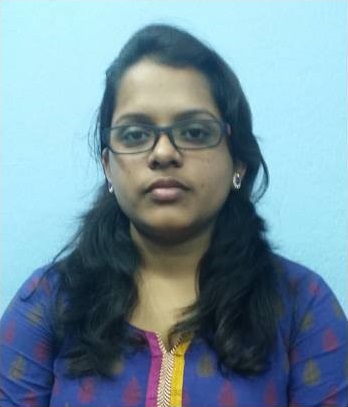
MS. TANIYA PURKAIT
Reg. No.: 2016-EZ-218 (CSIR-SRF)
Designation: PhD Scholar
Aug 2016 - Feb 2021
-

MR. SUBHAJIT SARKAR
Reg. No.:
Designation: Project JRF/SRF
Aug 2018 - Feb 2021
-
1.
Pd ‘Kills Two Birds with One Stone' for the Synthesis of Catalyst: Dual Active Sites of Pd Triggers the Kinetics of O2 Electrocatalysis , Greesh Kumar,† Sabuj Kanti Das,† Chandrani Nayak and Ramendra Sundar Dey* , Small , 2024 , 20 , 2307110 , DOI:10.1002/smll.202307110 -
2.
p-block metal oxide as an efficient electrocatalyst for boosting ambient ammonia synthesis , Sakshi Bhardwaj, Reshmi Thekke Parayil, Santosh Gupta, and Ramendra Sundar Dey* , Energy & Fuels , 2024 , 10.1021/acs.energyfuels.4c01741 , 10.1021/acs.energyfuels.4c01741 -
3.
Donor-Acceptor Covalent Organic Frameworks Propel Oxygen Reduction Reaction with Push-Pull Dynamics , Greesh Kumar, Sabuj Kanti Das, Thakur Rochak Kumar Rana, Surajit Samui, Laurent Billon, and Ramendra Sundar Dey* , J. Mater. Chem. A , 2024 , DOI: 10.1039/D4TA04685D , DOI: 10.1039/D4TA04685D -
4.
Advancing Zinc Anodes: Strategies for Enhanced Performance in Aqueous Zinc-ion Batteries , Bharat Bhushan Upreti, Navpreet Kamboj, Ramendra Sundar Dey* , Small , 2024 , 10.1002/smll.202408138 , 10.1002/smll.202408138 -
5.
Unveiling the Charge Storage Mechanism of a Supercapacitor Constructed by Ortho-quinone-derived Covalent Organic Framework on Electrophoretically Exfoliated Graphene , Ritika Jaryal, Bharat Bhushan Upreti, Parteek Kumar, Sanjeeb Sutradhar, Sadhika Khullar*, Ramendra Sundar Dey*, Rakesh Kumar* , J. Mater. Chem. A , 2024 , 12 , 23076 , DOI: 10.1039/D4TA01917B -
6.
Coordination Structure Modulation in Group-VIB Metal Doped Ag3PO4 Augments Active Site Density for Electrocatalytic Conversion of N2 to NH3 , Ashmita Biswas, Mamta Devi Sharma, Samadhan Kapse, Surajit Samui, Ranjit Thapa, Santosh Gupta, Kathi Sudarshan, Ramendra Sundar Dey* , Small , 2024 , DOI: 10.1002/smll.202402006 , DOI: 10.1002/smll.202402006 -
7.
Surface hydrophobicity induced electrochemical nitrogen reduction reaction: A substrate-dependent case study on Cu foam versus Cu foil , Ashmita Biswas, Ramendra Sundar Dey* , Journal of Chemical Sciences , 2024 , 136 , 63 -
8.
Design of VO2 encased in N-doped Carbon as an Efficient Electrocatalyst for Nitrogen Reduction Reaction at Neutral and Acidic Media , Ashis Chhetri†, Ashmita Biswas†, Sumana Podder, Ramendra Sundar Dey*, Joyee Mitra* , Nanoscale , 2024 , DOI: 10.1039/D4NR00640B , DOI: 10.1039/D4NR00640B -
9.
Interlinking electronic band properties in catalysts with electrochemical nitrogen reduction performance: A direct influence , Ashmita Biswas†, Surajit Samui† and Ramendra Sundar Dey* , Electronic Structure , 2024 , 6 , 023001 -
10.
Deciphering the bridge oxygen vacancy-induced cascading charge effect for electrochemical ammonia synthesis , Ashmita Biswas,† Narad Barman,† Avinash N., Ranjit Thapa and Ramendra Sundar Dey* , Mater. Horiz , 2024 , 11 , 2217 -
11.
Elucidating the oxygen reduction reaction kinetics on defect engineered nanocarbon electrocatalyst: Interplay between N-dopant and defect sites. , Sakshi Bhardwaj, Samadhan Kapse, Soirik Dan, Ranjit Thapa* and Ramendra Sundar Dey* , J. Mater. Chem. A , 2023, , DOI: 10.1039/D3TA00871A -
12.
Mechanistic insight into the Co-based metal-organic framework as an efficient oxygen electrocatalyst via in situ FT-IR study , Greesh Kumar, Rajashi Haldar, Maheswaran Shanmugam and Ramendra Sundar Dey* , J. Mater. Chem. A , 2023 , 11 , 26508 -
13.
Refining the Spectroscopic Detection Technique: A Pivot in the Electrochemical Ammonia Synthesis. , Ashmita Biswas, Bikram Ghosh, Ramendra Sundar Dey* , Langmuir , 2023 , 39 , 3810-3820. , https://doi.org/10.1021/acs.langmuir.3c00201 -
14.
Laser-irradiated B-doped graphene showing enhanced capacitance in fluorine-free water-in-bisalt electrolyte , Bharat Bhushan Upreti, Ramendra Sundar Dey* , ACS Sustainable Chemistry & Engineering , 2023 , 12 , 872 -
15.
Rational design of ZIF-derived nanocarbon with dual metal active sites via molten salt strategy for advancing oxygen electrocatalysis , Sakshi Bhardwaj, Tribani Boruah and Ramendra Sundar Dey* , Inorg. Chem. Front , 2023 , 10 , 7296 -
16.
Interfacially stacked covalent porous polymer on graphene favors electronic mobility: Ensuring accelerated oxygen reduction reaction kinetics by in situ study , Greesh Kumar,† Sabuj Kanti Das,† Erakulan E. Siddharthan, Ashmita Biswas, Sakshi Bhardwaj, Manisha Das, Ranjit Thapa and Ramendra Sundar Dey* , J. Mater. Chem. A , 2023 , 11 , 18740 -
17.
Laser-irradiated carbonized polyaniline-N-doped graphene heterostructure improving the cyclability of on-chip micro-supercapacitor , Bharat Bhushan Upreti, Navpreet Kamboj, Ramendra Sundar Dey* , Nanoscale , 2023 , 15 , 15268 -
18.
Engineering hydrophobic–aerophilic interfaces to boost N2 diffusion and reduction through functionalization of fluorine in second coordination spheres , Sakshi Bhardwaj, Sabuj Kanti Das, Ashmita Biswas, Samadhan Kapse, Ranjit Thapa and Ramendra Sundar Dey * , Chemical Science , 2023 , 10.1039/D3SC03002D , 10.1039/D3SC03002D -
19.
Ample Lewis Acidic Sites in Mg2B2O5 Facilitate N2 Electroreduction through Bonding–Antibonding Interactions , Ashmita Biswas, Bikram Ghosh, Kathi Sudarshan, Santosh K. Gupta*, and Ramendra Sundar Dey* , Inorganic Chemistry , 2023 , 10.1021/acs.inorgchem.3c02389 , 10.1021/acs.inorgchem.3c02389 -
20.
Coordination Engineering of Dual Co, Ni Active Sites in N-Doped Carbon Fostering Reversible Oxygen Electrocatalysis , Greesh Kumar and Ramendra Sundar Dey* , Inorganic Chemistry , 2023 , 33 , 13519 , 10.1021/acs.inorgchem.3c01925 -
21.
Metal-free on-chip battery-supercapacitor hybrid system based on rationally designed highly conducting laser-irradiated graphene-based electrodes. , Navpreet Kamboj, Bharat Bhushan Upreti, Nitish Kumar, Ramendra Sundar Dey* , ACS Sustainable Chemistry & Engineering , 2023 , DOI: 10.1021/acssuschemeng.2c06927 -
22.
Engineering catalytically active sites by sculpting artificial edges on MoS2 basal plane for dinitrogen reduction at a low overpotential. , Renu Rani†, Ashmita Biswas†, Raihan Ahammed, Taniya Purkait, Anirban Kundu, Subhajit Sarkar, Mamta Raturi, Abir De Sarkar*, Ramendra Sundar Dey*, Kiran Shankar Hazra*, , Small , 2023 , 2206357. -
23.
Elevating the Energy Efficiency for the Power-to-Ammonia Conversion: Role of Oxygen Evolution Reaction Kinetics , Ashmita Biswas, Ramendra Sundar Dey* , J. Chem. Phys. , 2023 , 158 , 201103 , https://doi.org/10.1063/5.0153706 -
24.
A novel chemical approach for synthesizing highly porous graphene analogue and its composite with Ag nanoparticles for efficient electrochemical oxygen reduction: , Sabuj Kanti Das, Sauvik Chatterjee, Arnab Banerjee, Greesh Kumar, Astam Kumar Patra, Ramendra Sundar Dey*, Amlan J. Pal*, Asim Bhaumik* , (2022) , 451: 138766 , Chemical Engineering Journal , 10.1016/j.cej.2022.138766 -
25.
Electronic Interplay: Synergism of Binary Transition Metals and Role of M-N-S Site Towards Oxygen Electrocatalysis: , Manisha Das†, Ashmita Biswas†, Ramendra Sundar Dey* , (2022) , Chemical Communications , doi.org/10.1039/D1CC06050C -
26.
Oxygen Functionalization-Induced Charging Effect on Boron Active Sites for High-Yield Electrocatalytic NH3 Production: , Ashmita Biswas, Samadhan Kapse, Ranjit Thapa, Ramendra Sundar Dey* , (2022) , 14: 214 , Nano-Micro Letters , 10.1007/s40820-022-00966-7 -
27.
Inter-Electronic Interaction between Ni and Mo in Electrodeposited Ni–Mo–P on 3D Copper Foam Enables Hydrogen Evolution Reaction at Low Overpotential: , Manisha Das, Zubair Bashir Khan, Ashmita Biswas, Ramendra Sundar Dey* , (2022) , 61: 18253 , Inorg. Chem. , 10.1021/acs.inorgchem.2c03074 -
28.
Ultrafine mix-phase SnO-SnO2 nanoparticles anchored on reduced graphene oxide boost reversible Li-ion storage capacity beyond theoretical limit: , Navpreet Kamboj†, Bharati Debnath†, Sakshi Bhardwaj, Tanmoy Paul, Nikhil Kumar, Satishchandra Ogale*, Kingshuk Roy*, Ramendra Sundar Dey* , (2022) , ACS Nano , 10.1021/acsnano.2c07008 -
29.
Tuning the Electronic Structure of Cobalt Selenide on Copper Foam by Introducing a Ni Buffer Layer for Highly Efficient Electrochemical Water Splitting: , Manisha Das, Ashmita Biswas, Zubair Bashir Khan, Ramendra Sundar Dey* , (2022) , Inorganic Chemistry , 10.1021/acs.inorgchem.2c02325 -
30.
Three-dimensional nickel and copper-based foam-in-foam architecture as an electrode for efficient water electrolysis: , Manisha Das†, Zubair Bashir Khan†, Manami Banerjee, Ashmita Biswas and Ramendra Sundar Dey* , (2022) , Catalysis Today, , 10.1016/j.cattod.2022.07.004 -
31.
Facile Single Step Electrochemical Growth of Ni3P on Carbon Cloth for Highly Efficient Hydrogen Evolution Reaction: , Manisha Das†, Zubair Bashir Khan†, Navpreet Kamboj, Manami Banerjee and Ramendra Sundar Dey* , (2022) , 169: 064511 , Journal of The Electrochemical Society , 10.1149/1945-7111/ac76e7 -
32.
Lewis acid–dominated aqueous electrolyte acting as co-catalyst and overcoming N2 activation issues on catalyst surface: , Ashmita Biswas, Samadhan Kapse, Bikram Ghosh, Ranjit Thapa, Ramendra Sundar Dey* , (2022) , 119 (33): e2204638119 , Proc. Natl. Acad. Sci. (PNAS) , 10.1073/pnas.2204638119 -
33.
The Versatility of the Dynamic Hydrogen Bubble Template Derived Copper Foam on the Emerging Energy Applications: Progress and Future Prospects: , Manisha Das†, Ashmita Biswas†, Taniya Purkait†, Tribani Boruah†, Sakshi Bhardwaj, Sabuj Kanti Das, Ramendra Sundar Dey* , (2022) , doi.org/10.1039/D2TA01355J: , J. Mater. Chem. A , doi.org/10.1039/D2TA01355J -
34.
Electrochemical ammonia synthesis: fundamental practices and recent developments in transition metal boride, carbide and nitride-class of catalysts: , Ashmita Biswas† Sakshi Bhardwaj† , Tribani Boruah† and Ramendra Sundar Dey* , (2022) , 3: 5207 , Mater. Adv. , 10.1039/D2MA00279E -
35.
Exploring the chemistry of “Organic/water-in-salt” electrolyte in graphene-polypyrrole based high-voltage (2.4 V) microsupercapacitor: , Navpreet Kamboj, Ramendra Sundar Dey* , (2022) , 421: 140499 , Electrochimica Acta, , 10.1016/j.electacta.2022.140499 -
36.
Strategic modulation of target specific isolated Fe,Co single-atom active sites for oxygen electrocatalysis impacting high power Zinc-air battery: , Subhajit Sarkar†, Ashmita Biswas†, Erakulan E. S., Ranjit Thapa, Ramendra Sundar Dey* , (2022) , ACS Nano , doi.org/10.1021/acsnano.2c00547 -
37.
Dual Active Sites in Triazine-Based Covalent Organic Polymeric Framework Promoting Oxygen Reduction Reaction: , Tribani Boruah,† Sabuj Kanti Das,† Greesh Kumar,† Saptarsi Mondal, Ramendra Sundar Dey* , (2022) , Chemical Communications , doi.org/10.1039/D2CC00865C -
38.
Electrochemical Growth and Formation Mechanism of Cu2Se/CoSe2-Based Bifunctional Electrocatalyst: A Strategy for the Development of Efficient Material toward Water Electrolysis: , Manisha Das, Greesh Kumar, Ramendra Sundar Dey* , (2022) , ACS Appl. Energy Mater , doi.org/10.1021/acsaem.1c03497 -
39.
Metal-Free Pyrene-Based Conjugated Microporous Polymer Catalyst Bearing N- and S-Sites for Photoelectrochemical Oxygen Evolution Reaction: , Sabuj Kanti Das, Sanjib Shyamal, Manisha Das, Saptarsi Mondal, Avik Chowdhury, Debabrata Chakraborty, Ramendra Sundar Dey, Asim Bhaumik* , (2021) , Front. Chem., 9: 803860 , doi: 10.3389/fchem.2021.803860 -
40.
Electrochemically grown highly crystalline single-phase Ni3P superstructure accelerating ionic diffusion in rechargeable Ni–Zn battery: , Navpreet Kamboj, Ramendra Sundar Dey* , (2021) , 512: 230527 , Journal of Power Sources , 10.1016/j.jpowsour.2021.230527
-
1.
The Role of Transition Metal-Based Electrocatalyst Toward Efficient Electrochemical Hydrogen Fuel Generation: , Tribani Boruah, Ramendra Sundar Dey* , (2022) , 220 , John Wiley & Sons -
2.
Carbonaceous Materials and Future Energy: Clean and Renewable Energy Sources,: , Ramendra Sundar Dey, Taniya Purkait, Navpreet Kamboj, Manisha Das, , (2019) , ISBN 9780815347880 , CRC Press, Taylor & Francis Group , 10.1201/9781351120784 -
3.
Architecture and Applications of Functional Three-dimensional Graphene Networks in Graphene Materials: , Ramendra Sundar Dey and Qijin Chi , (2015) , 1: 67-99. , Fundamentals and Emerging Applications -
4.
Development of Biosensors from Polymer Graphene Composites in Graphene-Based Polymer Nanocomposites in Electronics: , Springer, Germany,Ramendra Sundar Dey , (2015) , 1: 277 , Electronics
-
1.
A 2D covalent organic framework as a metal-free electrode towards electrochemical oxygen reduction reaction: , Sabuj Kanti Das, Greesh Kumar, Manisha Das, Ramendra Sundar Dey* , (2022) , Materials Today: Proceedings , doi.org/10.1016/j.matpr.2022.02.370 -
2.
Laser-irradiated graphene-polymer contact electrification as a sustainable power source in metal-free triboelectric nanogenerator: , Navpreet Kamboj, K. Athira, Ramendra Sundar Dey* , (2022) , Materials Today: Proceedings , doi.org/10.1016/j.matpr.2022.02.415
- 1. Disposable Cholesterol Biosensor Based On Redox Mediator Functionalized Graphene Oxide Nanoarchitecture And The Preparation Thereof: , : Ramendra Sundar Dey, C. Retna Raj, (2014) , Indian Pat. Appl, IN 2013KO00563 A, 20141121.
- 2. A Method For Synthesizing Few-layered Graphene From Biomass: , Ramendra Sundar Dey, Manami Banerjee, (2022) , 1970-01-01 , Indian Patent, Application No. 202241022923
- 3. An Electrocatalyst And A Process For Its Preparation. , Ramendra Sundar Dey, Ashmita Biswas , 1970-01-01 , Indian Patent Application No. 202011047861 A, Date: 11-03-2020. Full specification filed on 22-09-2021
- 4. An Electrocatalyst, Method Of Preparation, And Applications Thereof. , Ramendra Sundar Dey, Sakshi Bhardwaj, Sabuj Kanti Das, Ashmita Biswas , 1970-01-01 , Indian Patent Application No. 20231100511,
- 5. Electrochemical Cell For Generating Ammonia. , Ramendra Sundar Dey, Ashmita Biswas , 1970-01-01 , Indian Patent Application No. 202211074333,
· Indian National Science Academy (INSA) Associate Fellow, 2023.
· INSA Distinguished Lecture Fellow 2024 in Chemistry.
· Member of Indian National Young Academy of Sciences (INYAS) for 2021-2026.
· Associates of Indian Academy of Sciences (I.A.Sc.) Bengaluru for 2020-2023.
· Emergent Materials Scientist (EMS) award 2023 by IIT Roorkee.
· Selected for Journal of Materials Chemistry A Emerging Investigator 2019.
· Featured in the ACS Applied Energy Materials Early Career Energy Scientists 2022.
· Selected for 2023 Journal of Chemical Physics Emerging Investigator award.
· Selected for Nanoscale Emerging Investigator 2023.
- Associate Editor of Frontiers in Materials, for the section Carbon-Based Materials, from 2022-ongoing.
- Guest Editor: Discover Chemical Engineering, Springer link - Topical Collection [Electrocatalysis: Challenges and Opportunities] https://link.springer.com/collections/haaigjjjac
- Guest Editor: Catalysis Today, Elsevier. Title: Low Dimensional Inorganic Materials as Electrocatalysts: Experimental and Theoretical Perspectives. https://www.sciencedirect.com/journal/catalysis-today/about/call-for-papers#low-dimensional-inorganic-materials-as-electrocatalysts-experimental-and-theoretical-perspectives
- Guest Editor: A special issue entitled ‘Materials for chemical sensing and renewable energy: Recent trends’ in ‘Reviews in Advanced Sciences and Engineering’, American Scientific Publishers, Vol. 5, No. 1, 2016.
http://www.aspbs.com/rase/Call%20for%20articles_RASE.pdf
- INSPIRE Faculty Fellowship Award 2015.
- H. C. Ørsted and Marie Sklodowska-Curie COFUND Postdoc fellowship, 2013 from DTU, Denmark.
- Member: International Society of Electrochemistry (Member ID: 13302)
- Life member: Indian Society of Electroanalytical Chemistry (Member ID: LM-184)
- Life member: The Electroanalytical Society of India (ECSI) IISc (Member ID: LM-412)
- Member of ACS (American Chemical Society)
- CRSI Life member (Member ID: LM-2782)
Postdoctoral research:H. C. Ørsted Postdoc fellow, Technical University of Denmark (DTU),, Denmark (April 2013 to March 2015 )
Scientist-B:Institute of Nano Science & Technology,, Mohali, India. (July 2015 to January 2019 )
Scientist C:Institute of Nano Science & Technology,, Mohali, India (January 2019 to December 2021 )
Scientist D:INST Mohali, Institute of Nano Science and Technology (INST), Mohali Knowledge City, Sector 81, S.A.S. Nagar, Mohali-140306, Punjab (January 2022 to Present till date )
-
Title: Towards the development of hybrid supercapacitor-biofuel cell technology and devicesle solid-state supercapacitor from nano-engineered carbonaceous materials
PI: Dr. Ramendra Sundar Dey
Funding Amount: 35 L
Tenure: 5 years
Funding Agency: DST/INSPIRE
-
Title: New class of flexible solid-state supercapacitor from nano-engineered carbonaceous materials
PI: Dr. Ramendra Sundar Dey
Funding Amount: 28 L
Tenure: 3 years
Funding Agency: DST/SERB/EMR
-
Title: Design strategies for the development of non-precious metal-based air electrode for rechargeable metal-air batteries: Unveiling the chemistry of active sites
PI: Dr. Ramendra Sundar Dey
Funding Amount: 38.9L
Tenure: 3 years
Funding Agency: SERB CRG
-
Title: Bio-inspired carbon nanomaterial from agricultural waste biomass
PI: Dr. Ramendra Sundar Dey
Tenure: 1 year
Funding Agency: Kandiyar Inc., Alangudi
Additional Info: We have developed a technology for how to produce graphene from waste biomass.
-
Title: Electrochemical ammonia synthesis: The role of active sites of the electrocatalyst for the reduction of dinitrogen
PI: Ramendra Sundar Dey
Funding Amount: 3755250
Tenure: 3 years
Funding Agency: BRNS















